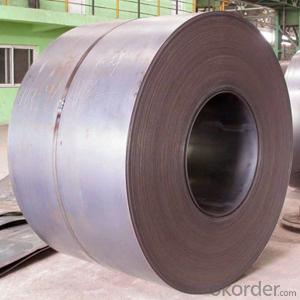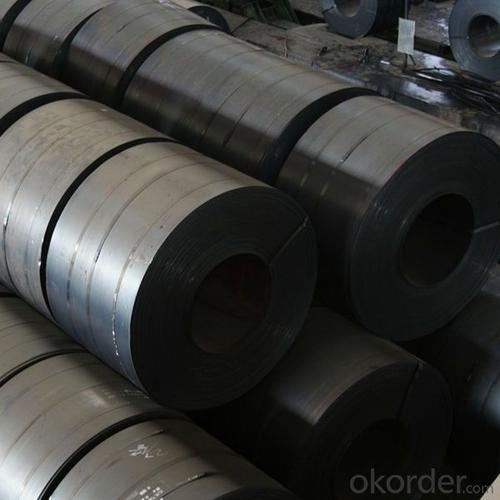Hot Rolls Steel Coils Steel Plates Steel Sheets Made In China
- Loading Port:
- Tianjin
- Payment Terms:
- TT OR LC
- Min Order Qty:
- 25 m.t.
- Supply Capability:
- 20000 m.t./month
OKorder Service Pledge
OKorder Financial Service
You Might Also Like
Specification
DESCRIPTION FOR SS400 CARBON STEEL SHEET
1.Thickness: 1-200mm
2.Width: 100-3000mm
3.Length: 1000-12000mm
4. Applications :mining machinery, environmental protection, engineering
5. Grade:SS400 A 36 Q195.Q235.Q345.SPCC.SPCH
6.Surface : Hot Rolled Cold Rolled Galvanized Steel
DESCRIPTION FOR CARBON STEEL PLATE
Product | carbon steel plate price per ton |
Place of origin | Tianjin,China mainland |
MOQ | 25 tons |
Thickness | 1mm-200mm |
Width | 1000mm-3000mm |
Length | 1000mm-2000mm |
Application | widely |
Standard | AISI,ASTM,BS,DIN,JIS,GB,etc |
Grade | A572,A573,A633,A678,A709,A710,G3101,G3136,etc |
Tpye | Steel plate |
Surfacing | Coated |
Productive Technology | Hot Rolled & Cold Rolled |
Price | FOB USD 500-900 per ton |
Port | TIANJIN,SHANGHAI |
Payment Terms | L/C,T/T,Western Union,MoneyGram |
Product Ability | 1000 tons per month |
Delivery | 10 days after deposit or according to customers' quantity |
Packing | standard seaworthy export packing or as the request of customers |
PACKING:
1.Big thickness:by bulk vessel
2.Small thickness:packed by steel strips and shipped by container
3.According to the requirements of customers'
TRADE TERMS :FOB, CFR, CIF
DETAILED PICTURES FOR STEEL COILS



EXPORT MARKET FOR STEEL COILS/SHEETS
Our target market is the international market. Every year we export most of products to countries like India, Pakistan, South Korea, Brazil, Australia, South Africa, Spain, Sri Lanka, Taiwan, Hong Kong, etc.
FAQ:
Q: How can I get the samples?
A: If you need some samples to test ,please pay for the transportation freight of samples and our samples are free for you.
Q: How can I get your price list?
A: Please send us your email or fax and order information – Quantity, Specification (steel type, thickness, width, surface finish), then I can send you the price list.
- Q: I am wondering if i can use my western guitar as a kind of steel-guitar, read something about it on Wikipedia.
- Musical style speaks volumes while it includes this concern. people who % severe quantity would be unhappy with unamplified nylon string guitars. From my attitude, the common distinction between metallic and nylon is this: metallic strings ring and nylon strings resonate. the quantity produced by employing metallic is frequently plenty greater suitable than nylon yet, to my way of thinking, the sound resonance produced by employing the wood of your guitar is largely masked by employing metallic strings. in case you have a decently made guitar (frequently, around 1000 money and up), the sound interaction between the wood and the strings in a nylon guitar is magical around the completed frequency selection. With a metallic string guitar, the sound produced by employing the vibrating string overpowers the wood resonance in any respect yet low frequencies. in my view, i will take a nylon string guitar any day for the sensitivity gained from the interaction between wood and vibrating string.
- Q: Well im currently doing a project. Wanna help me? Because trust me, i really need it. You know how steel was created in China? If you didnt, you just learned something newww(: but anyways got any info on that? Websites? or just info from websites? Well lemme know because if its the best you get Best Answer Easy points right? (: Okay thanksss (:
- Steel is created in a primitive way whenever iron oxide ore (red dirt) is mixed with wood and burned. Seemingly everyone has a pet theory how their own selected country was the first to notice and do it on purpose. Regards, Larry.
- Q: Is steel cut really better? The nutritional profiles are nealy identical. Which one has the best flavor??Thanks!
- Steel okorder /
- Q: What are the different types of steel coil grades?
- Various industries and applications utilize a range of steel coil grades. Some commonly employed types include: 1. Carbon Steel: This fundamental steel variant consists primarily of iron and carbon. Its widespread use in construction, automotive, and manufacturing industries stems from its exceptional strength and durability. 2. Stainless Steel: This specific steel variant incorporates chromium, which imparts corrosion resistance, making it appropriate for applications requiring protection against oxidation and staining. Industries such as food processing, chemical, and medical frequently employ stainless steel. 3. High-Strength Low-Alloy (HSLA) Steel: HSLA steel comprises trace amounts of alloying elements like copper, phosphorus, niobium, and vanadium. This steel variant offers superior strength and improved mechanical properties when compared to carbon steel, rendering it suitable for structural applications. 4. Galvanized Steel: This type of steel undergoes a zinc coating process to safeguard against corrosion. Galvanized steel finds common use in outdoor applications like roofing, fencing, and automotive components. 5. Electrical Steel: Also known as silicon steel, electrical steel possesses high magnetic permeability, low electrical conductivity, and minimal core loss. It finds application in the production of transformers, motors, and other electrical equipment. 6. Tool Steel: Tool steel, a high-carbon steel variant, is specifically engineered for fabricating tools and dies. Its outstanding hardness, wear resistance, and toughness make it appropriate for cutting, forming, and shaping materials. These examples represent merely a fraction of the available steel coil grades. Each grade exhibits its own distinct properties and characteristics, rendering it suitable for specific applications within various industries.
- Q: What is the average thickness tolerance for steel coils?
- The average thickness tolerance for steel coils can vary depending on the specific industry and application. However, a common average thickness tolerance for steel coils is typically around ±0.005 to ±0.010 inches.
- Q: Can steel coils be coated with light-reflective materials?
- Yes, steel coils can be coated with light-reflective materials. These materials, such as metallic coatings or specialized paints, can enhance the reflective properties of the steel surface, making it more resistant to heat absorption and reducing energy consumption.
- Q: Can steel coils be customized according to specific requirements?
- Yes, steel coils can indeed be customized according to specific requirements. Customization can include adjusting the size, shape, thickness, and even the chemical composition of the steel coils to meet the specific needs and preferences of customers.
- Q: Can steel coils be used in the automotive industry?
- Steel coils find extensive use in the automotive industry. They are frequently employed in the production of diverse automotive components and parts. Specifically, they are well-suited for applications necessitating robustness and longevity, such as body panels, chassis components, suspension parts, and engine components. Steel coils exhibit remarkable structural integrity, corrosion resistance, and impact resistance, all of which are indispensable attributes for automotive purposes. Besides, they can be effortlessly molded and shaped into desired dimensions, rendering them exceptionally adaptable and cost-effective for automotive manufacturers. In summary, due to their outstanding mechanical properties and adaptability for diverse automotive applications, steel coils enjoy widespread utilization in the automotive industry.
- Q: how do i quinch steel? i heard instead of water oil will actually make it harder... wat ways are best for wat steels? and how do i tell wat kind of steel i have?... i will be doin this with my poket knife..
- boy what a though question ! let me explain. when you rapidly cool a steel from high temperatures(depending on steel type) with water or oil or other means , it is called quenching. it depends on the steel type to say if it is better to quench it with oil or water but basically in water you will have a harder steel rather than oil. for some steels if you do this you will ruin it's properties ! you can't totally tell what kind of steel do you have until you get it analyzed with Quantometer analyzer with a pocket knife it is more like an estimation and it can't be trust able generally if you can scratch the steel with your knife it means it is not a hard steel and it might not be expensive. I hope that helps but for more information i need to know more !
- Q: How are steel coils used in the manufacturing of doors and windows?
- Steel coils are used in the manufacturing of doors and windows as they provide a strong and durable material for constructing the frames and components. The coils are first processed and cut into the desired shape, then formed and welded together to create the frames. This ensures stability and support, allowing the doors and windows to withstand various weather conditions and provide long-lasting performance.
Send your message to us
Hot Rolls Steel Coils Steel Plates Steel Sheets Made In China
- Loading Port:
- Tianjin
- Payment Terms:
- TT OR LC
- Min Order Qty:
- 25 m.t.
- Supply Capability:
- 20000 m.t./month
OKorder Service Pledge
OKorder Financial Service
Similar products
Hot products
Hot Searches
Related keywords


































